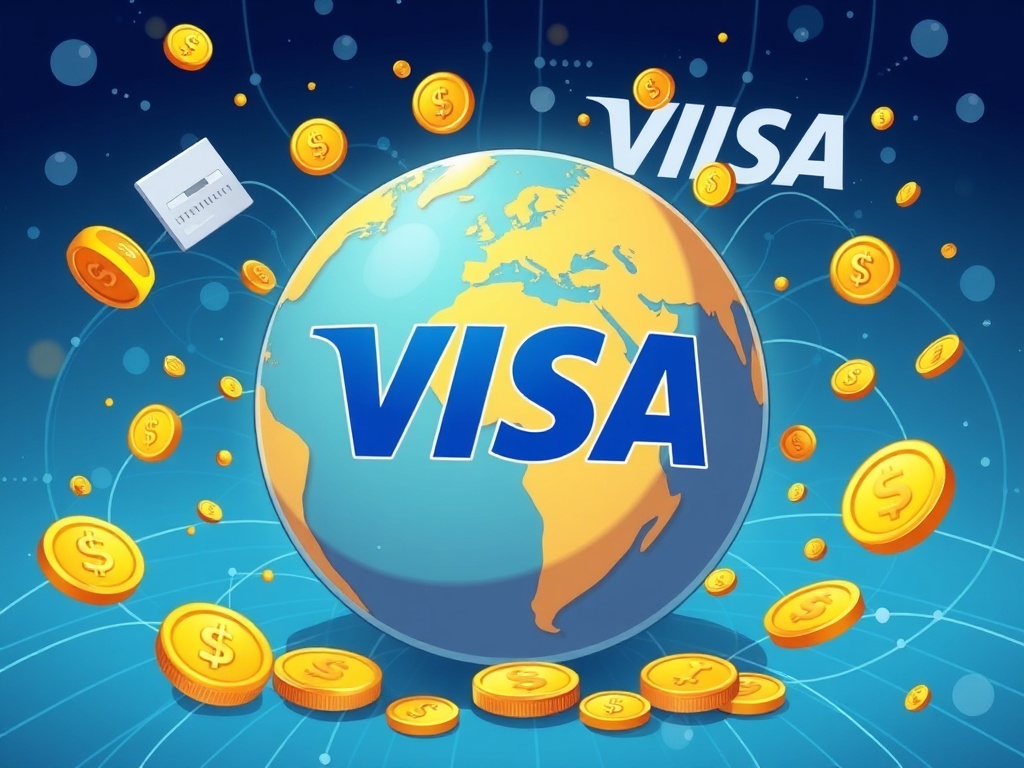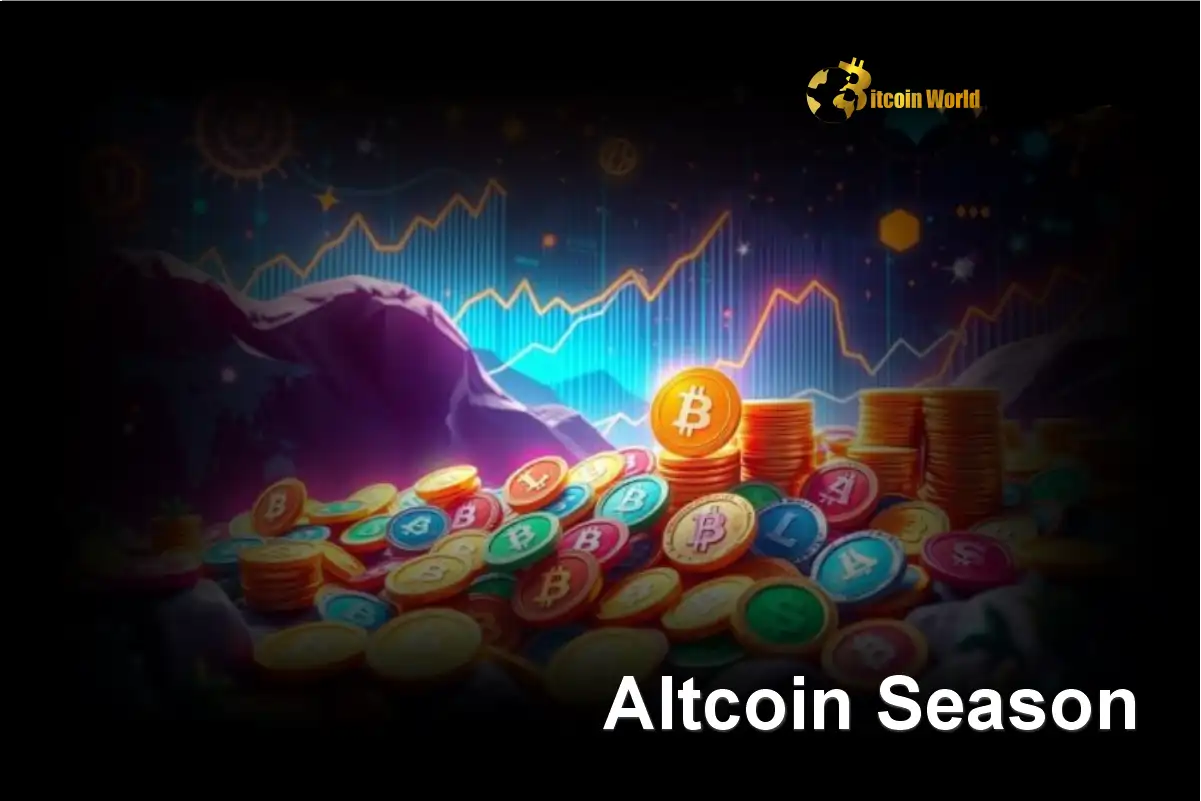BitcoinWorld

Revolutionary Visa Stablecoin Settlement: Unlocking Global Transaction Efficiency
In the dynamic world of digital finance, a significant shift is underway, promising to redefine how money moves across borders. For anyone keen on the intersection of traditional finance and the burgeoning cryptocurrency space, Visa’s latest announcement is nothing short of pivotal. The global payments giant, already a behemoth in conventional transactions, is making bold strides into the future by significantly expanding its Visa stablecoin settlement platform. This strategic move is set to unlock unprecedented levels of efficiency and speed for cross-border payments, leveraging the power of stablecoins and cutting-edge blockchain technology.
The Pivotal Expansion of Visa Stablecoin Settlement
Visa has been a pioneer among traditional financial institutions in exploring the potential of digital assets. Building on its foundational work with stablecoins on Ethereum and Solana, the company is now taking an even more ambitious leap. The core of this expansion involves integrating three new, prominent stablecoins into its settlement framework: PayPal USD (PYUSD), Global Dollar (USDG), and Circle’s EURC. This isn’t just about adding more digital currencies; it’s about broadening the scope and utility of stablecoin-powered transactions.
Furthermore, the expansion isn’t limited to stablecoins alone. Visa is also extending its support to two additional high-performance blockchain networks: Stellar and Avalanche. This multi-chain approach underscores Visa’s commitment to interoperability and finding the most efficient pathways for value transfer. The entire initiative is being undertaken in close partnership with Paxos, a regulated blockchain infrastructure platform, which lends significant credibility and regulatory compliance to the endeavor.
Why This Matters: Speed, Efficiency, and Global Reach
The primary drivers behind Visa’s expanded Visa stablecoin settlement capabilities are speed and efficiency. Traditional cross-border payments often involve multiple intermediaries, complex reconciliation processes, and significant delays, sometimes taking days to clear. Stablecoins, by contrast, offer near-instantaneous settlement, operating 24/7 on decentralized networks. Here’s how this expansion is set to revolutionize global transactions:
- Faster Settlements: By utilizing stablecoins, transactions can be settled in minutes, not days, drastically reducing waiting times for businesses and consumers alike.
- Reduced Costs: Fewer intermediaries and streamlined processes can lead to lower transaction fees, benefiting both senders and receivers.
- Enhanced Accessibility: Stablecoins can bridge gaps in financial access, allowing more individuals and businesses, particularly in emerging markets, to participate in the global economy.
- 24/7 Operations: Unlike traditional banking hours, blockchain networks operate continuously, enabling seamless global transactions around the clock.
- Increased Transparency: Blockchain ledgers provide a transparent and immutable record of transactions, enhancing trust and reducing fraud.
A Closer Look at the New Stablecoins and Blockchains
Understanding the specific assets and networks involved sheds light on the strategic thinking behind Visa’s move:
PayPal USD (PYUSD)
Launched by PayPal, one of the world’s largest online payment processors, PYUSD is a stablecoin pegged to the U.S. dollar. Its inclusion is particularly significant because it brings the immense user base and brand recognition of PayPal into the stablecoin ecosystem. This could significantly accelerate mainstream adoption of stablecoins for everyday transactions.
Global Dollar (USDG)
USDG is another U.S. dollar-backed stablecoin, aiming for broad utility in various financial applications. Its integration further diversifies the stablecoin options available on Visa’s platform, providing more choices and redundancy for partners.
Circle’s EURC
While most stablecoins are USD-pegged, EURC represents a crucial expansion into EUR-backed stablecoins. This is vital for facilitating euro-denominated cross-border payments, opening up new corridors for trade and remittances within the Eurozone and beyond. Circle, the issuer of EURC (and USDC), is a well-established and regulated entity in the stablecoin space.
Stellar and Avalanche: Powering the New Frontiers
Visa’s decision to add Stellar and Avalanche alongside Ethereum and Solana highlights the growing maturity and specialization within the blockchain landscape:
| Blockchain Network | Key Characteristics for Visa |
|---|---|
| Stellar | Known for its low transaction costs and fast settlement times, Stellar is optimized for cross-border payments and remittances. Its network is designed to connect financial institutions and facilitate asset transfers efficiently. |
| Avalanche | A high-performance blockchain with impressive transaction throughput and near-instant finality. Avalanche’s robust infrastructure and subnet architecture make it suitable for enterprise-grade applications requiring scalability and reliability. |
| Ethereum (Existing) | The largest smart contract platform, offering a secure and widely adopted base for stablecoins. While sometimes facing congestion and higher fees, its established ecosystem is invaluable. |
| Solana (Existing) | Praised for its high transaction speed and low costs, Solana provides a scalable environment for high-volume payment solutions. |
This diverse network support allows Visa to route transactions efficiently, choosing the optimal blockchain based on factors like cost, speed, and specific partner requirements. It’s a testament to a pragmatic, technology-agnostic approach to innovation.
The Role of Paxos in Ensuring Trust and Compliance
The partnership with Paxos is a cornerstone of this expansion. Paxos is a regulated blockchain infrastructure company that specializes in issuing stablecoins and providing enterprise-grade blockchain solutions. Their expertise ensures that the stablecoin operations adhere to stringent regulatory standards, a critical factor for a global financial player like Visa.
Paxos’s role typically involves:
- Issuance and Redemption: Managing the issuance and redemption of stablecoins, ensuring they are fully backed by corresponding fiat reserves.
- Regulatory Compliance: Navigating complex regulatory landscapes to ensure all transactions and operations are compliant with relevant financial laws.
- Technical Infrastructure: Providing the robust and secure technical backbone for stablecoin operations.
This partnership underscores Visa’s commitment to responsible innovation, prioritizing security, and regulatory adherence as it integrates new technologies.
Bridging the Gap: TradFi Meets Crypto with Visa Stablecoin Settlement
Visa’s expansion of its Visa stablecoin settlement platform represents a significant step in bridging the gap between traditional finance (TradFi) and the decentralized world of cryptocurrencies. For years, the two realms operated largely in silos, but institutions like Visa are recognizing the undeniable advantages that blockchain and stablecoins offer for modernizing payment systems.
This move isn’t just about facilitating crypto-to-crypto transactions; it’s about enabling traditional businesses and financial institutions to leverage the benefits of stablecoins for their everyday operations. Imagine a scenario where a large multinational corporation can pay its suppliers across different continents using EURC or PYUSD, with near-instant settlement and transparent tracking, all facilitated by Visa’s trusted network. This vision is now becoming a reality.
Potential Impact and Future Implications
The implications of this expansion are far-reaching:
- Remittances: A massive market segment that stands to benefit immensely from faster, cheaper stablecoin-based transfers.
- B2B Payments: Streamlining complex business-to-business transactions, reducing operational overheads and improving cash flow.
- E-commerce: Enabling more efficient cross-border payments for online merchants and consumers.
- Financial Inclusion: Providing a pathway for unbanked and underbanked populations to access global financial services.
- Innovation Catalyst: Encouraging other traditional financial players to explore and adopt blockchain-based solutions.
While the benefits are clear, challenges remain, including regulatory clarity, scalability at truly global levels, and broader user adoption. However, Visa’s strategic commitment signals a strong belief in the long-term viability and transformative power of stablecoins.
What Does This Mean for You? Actionable Insights
Whether you’re a business owner, a developer, or simply an interested consumer, Visa’s latest move has implications worth considering:
- For Businesses: Explore how stablecoin payments could reduce your cross-border transaction costs and accelerate settlement times. Look into partners who leverage Visa’s new capabilities.
- For Developers: This signals a growing demand for robust, compliant blockchain integrations within traditional finance. Opportunities abound in building tools and services that bridge these two worlds.
- For Consumers: While direct consumer access might take time, this lays the groundwork for more efficient and potentially cheaper international transfers and payments in the future.
Visa is not merely observing the crypto space; it is actively shaping its future, demonstrating how established financial giants can innovate by embracing decentralized technologies. This expansion is a clear signal that stablecoins are increasingly becoming a foundational layer for the next generation of global payments.
Conclusion: A Bold Step Towards a Connected Financial Future
Visa’s expansion of its Visa stablecoin settlement platform to include PYUSD, USDG, and EURC, alongside support for Stellar and Avalanche, marks a truly revolutionary moment in the evolution of global finance. It’s a powerful affirmation of stablecoins’ potential to enhance speed, efficiency, and accessibility in cross-border transactions. By partnering with key players like Paxos and integrating diverse blockchain networks, Visa is not just adapting to the future; it’s actively building it. This strategic move underscores a growing convergence between traditional financial infrastructure and the innovative capabilities of blockchain technology, promising a more interconnected, efficient, and inclusive global payment ecosystem for everyone.
Frequently Asked Questions (FAQs)
Q1: What is Visa’s stablecoin settlement platform?
A1: Visa’s stablecoin settlement platform allows its partners to settle transactions using stablecoins instead of traditional fiat currencies. This leverages blockchain technology for faster, more efficient, and often cheaper cross-border payments, building on Visa’s existing network infrastructure.
Q2: Which new stablecoins and blockchains are now supported by Visa?
A2: Visa has expanded support to include PayPal USD (PYUSD), Global Dollar (USDG), and Circle’s EURC stablecoins. Additionally, it has added support for transactions on the Stellar and Avalanche blockchain networks, complementing its existing infrastructure on Ethereum and Solana.
Q3: What are the main benefits of this expansion for global transactions?
A3: The primary benefits include significantly improved speed and efficiency for cross-border transactions, often enabling near-instant settlement. It also aims to reduce costs, enhance accessibility, and facilitate 24/7 operations, making international payments more seamless and transparent.
Q4: How does this move impact the relationship between traditional finance and cryptocurrency?
A4: This expansion represents a major step in bridging traditional finance (TradFi) with the cryptocurrency world. By integrating stablecoins into its core settlement processes, Visa is demonstrating how established financial institutions can leverage blockchain technology for mainstream use cases, fostering greater interoperability and adoption.
Q5: What role does Paxos play in this initiative?
A5: Paxos, a regulated blockchain infrastructure platform, is a key partner in this expansion. They play a crucial role in managing the issuance and redemption of stablecoins and ensuring that all operations adhere to stringent regulatory and compliance standards, providing a secure and trusted environment for Visa’s stablecoin settlement activities.
Q6: Will this affect everyday Visa card users directly?
A6: While this expansion primarily impacts Visa’s institutional partners and the underlying settlement infrastructure, it lays the groundwork for future innovations that could eventually benefit everyday Visa card users through faster and potentially cheaper international transactions, remittances, and e-commerce payments. Direct consumer-facing applications are likely to evolve over time.
Did you find this article insightful? Share it with your network on social media to spread the word about Visa’s groundbreaking moves in stablecoin settlement and the future of global payments!
To learn more about the latest crypto market trends, explore our article on key developments shaping stablecoins institutional adoption.
This post Revolutionary Visa Stablecoin Settlement: Unlocking Global Transaction Efficiency first appeared on BitcoinWorld and is written by Editorial Team





